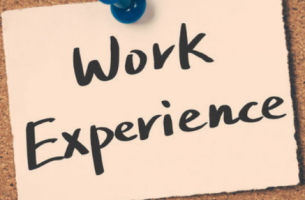
Wayne Brophy
Dec 21, 2018
What are the best recruitment methods? And the survey says…
The post-Christmas job blues may be nearly upon us when many resolutions include “New Year, New Job”. Despite the flurry of fed-up employees searching job boards, it’s still a candidate’s market. To avoid being ‘regifted’ an unwanted candidate, it’s a good time of year to review what the best recruitment methods are. Eploy's 2018 Candidate Attraction Report (published in December 2018) gives you a great overview of what sources provide the best quality and quantity of candidates for in-house and agency recruiters generally, as well as sector-by-sector. It also provides insight into the age-old question: who typically sources the best quality candidates - internal recruiters or agencies? We take a look at which sources provide the best quality and quantity, what the differences from last year’s results could be attributed to and our thoughts on the findings
So which methods of recruitment will work best for you?
 The ideal point in the quadrant depends on the role. For lower-skilled roles, you may be willing to sacrifice quality for quantity. For highly-skilled roles, being burdened by too many candidates can be problematic.
The ideal point in the quadrant depends on the role. For lower-skilled roles, you may be willing to sacrifice quality for quantity. For highly-skilled roles, being burdened by too many candidates can be problematic.
In-house
Unsurprisingly, employee referrals result in the highest quality of new hires. It makes sense that your employees will know like-minded people who share similar values (and be unlikely to put in a good word for a friend who may make them look bad!) However, employee referrals fail to generate enough quantity. In fact, they’re fourth from bottom for having candidates knocking at an employer’s door - only social media, events and print fare worse. In contrast, second place for quality was professional/social networks, only just pipping specialist job boards to the post, followed very closely by PSL / agencies and ATS / CRM / talent pool. (It’s surprising that agencies have dropped from a high second-place quality score, as rated by in-house teams. We discuss this in more detail below, but if you are finding the quality of candidates provided by your agency is not good enough, you may want to read: 10 Red Flags to Look for When Hiring a Specialist Recruitment Agency)
Agencies
The CRM / ATS / talent pool generates the highest quality of candidates, followed by professional social networks (i.e. LinkedIn) and employee referrals. This is also generally unsurprising, but the quantity generated requires further thought, which we discuss below.
How the survey compares with 2017 results
For both in-house recruiters and recruitment agencies, their top positions stay the same, with almost identical quantity/quality average scores: ATS/CRM/talent pool for consultancies and employee referrals for in-house recruiters. Of most interest is the change in the quality and quantity of candidates found on professional networks. Both have rated the quality of applicants found on these networks as higher, although agencies have seen a bigger increase in quantity too. Meanwhile, the in-house scoring of the quality of applicants provided by agencies has dropped slightly.
Our thoughts
The results show that recruitment agencies are able to generate better quality and quantity applicants from LinkedIn than in-house recruiters and that the quality has dramatically improved since last year. This suggests that they are becoming increasingly adept at using LinkedIn to find quality candidates - at a faster rate than in-house recruiters. As in-house recruiters generally have more duties and a wide variety of roles to recruit for, this makes sense. (They also may not have access to LinkedIn recruiter tools). Despite this, the top scoring source for agencies remains their CRM / talent. As recruitment agencies speak with candidates daily, they can quickly build up a CRM and ‘talent pool’ (or ‘hot list’) of candidates that are carefully segmented. One worrying issue remains with the survey: in-house recruiters place PSLs / agencies in fourth place for quality. This suggests that whilst recruitment consultants may have access to more proactive sources that CAN generate the best quality of candidates that they DO place, they may not be following the brief. This could be down to two things:
- The consultants do not specialise in one sector or geographic location.
- They’ve not truly taken the time to understand or qualify candidates based on an organisation’s requirements and culture.
Either way, it appears that not all recruitment consultancies are providing a service that improves hiring KPIs. Before instructing an agency, there can be some warning signs to look out for, which we discuss in our blog: 10 Red Flags to Look for When Hiring a Specialist Recruitment Agency)
Hiring for cultural fit can significantly improve the quality of your hires.
Discover the questions to ask - and the warning signs to look for in candidates’ answers - with our guide: Best Interview Questions for Culture Fit.
Editor’s note: This blog was first published in December 2018 but has been amended upon receipt of ePloy’s updated survey.



